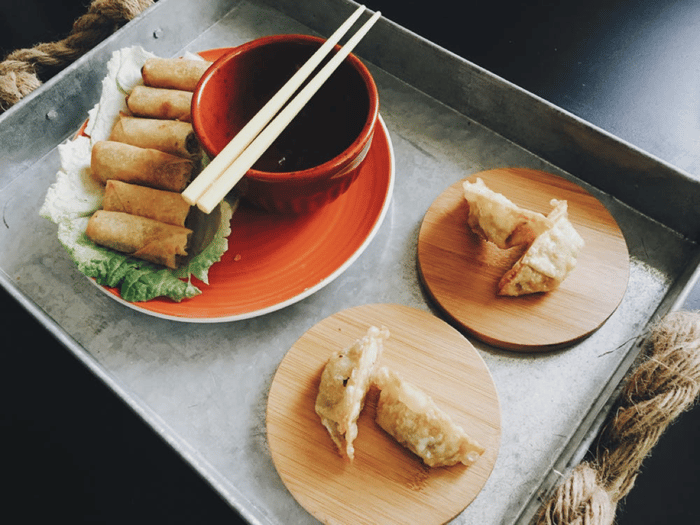The year of the tiger is upon us, and we look forward to spending these days with much fanfare. Chinese New Year is a time for families to come together and wish that health, wealth, prosperity, and much more are bestowed generously upon the entire family. Traditionally, Chinese New Year is celebrated to welcome Spring and the end of the winter and is also referred to as the 'Spring Festival'. Each member of the family, no matter where they are, make it a point to visit their families. If a family member cannot visit, their seat is still kept at the table to signify their place in the family.
There are many traditions, symbolisms, and stories that revolve around this day, amongst these are the beliefs regarding adding certain ingredients and dishes in their reunion dinner. In this article, we will explore the symbolism behind these ingredients and dishes as well as provide vegan recipes by Asian vegan bloggers for you to try out for your Chinese New Year feast!
For Wealth
春 卷 (chun juan), or spring rolls, are usually made for New Year’s Day as their shape resembles bars of gold. Crispy flaky exteriors are filled with fresh ingredients that signify the arrival of spring. While making vegan spring rolls at home, if using store-bought wraps, ensure that they do not contain eggs. This recipe uses tofu to make a vegan version of the spring rolls.
水 饺 (shui jiao), or dumplings, are another staple of the feast. They are either shaped as silver ingots or gold bars, both signifying wealth. In northern China, it is a tradition for families to make dumplings together and they are consumed at midnight as the new year is welcomed. If you feel like bringing your friends and family together for a dumpling-making party, you can check this recipe.
 Photo by Abby Kihano from Pexels
Photo by Abby Kihano from Pexels
Along with spring rolls, various vegetables and fruits are also used as ingredients or served as is to signify wealth like leeks (homonym for counting), orange (same meaning as wealth), black moss (known as fa cai in Chinese, which literally translates to prosperity vegetable), and kumquat (looks like gold).
For Success
年 糕 (nian gao) is a glutinous rice cake delicacy that everyone looks forward to for their new year feast. Nian Gao is a homonym of ‘higher every year’ and so is consumed with the hopes that the family members will achieve more success in the next year. While every family has its own recipe and various versions including both sweet and savory options, this one will help you make a vegan version of the dish.
For Togetherness
This aspect of the New Year is important since many people try to be home with their families. Each house would have 攒 盒 (cuan he) or a tray of togetherness, that is kept filled through the entire duration of the new year celebrations. This tray is usually circular or octagonal in shape and has eight compartments on the perimeter and one at the center. The number 8 is auspicious and signifies wealth. Each section is filled with candies and nuts. Each tray, depending on what is placed inside, has its own special significance, for example, melon seeds are used for health and happiness, lotus root seeds for fertility, while candied melons for health and growth. Some of these selections and candies are also dyed red, an auspicious color.
汤 圆 (tang yuan), or glutinous rice balls, are served as a dessert and also signify togetherness. Their stickiness is taken as a symbol of a family sticking together, and their round shape symbolizes wholesomeness and completeness. You'll find them filled with all sorts of ingredients, including peanuts, coconut, dates and red beans. You can make Tang Yuan at home with this recipe.
 Photo from Pixabay
Photo from Pixabay
For Self-Purification
罗 汉 斋 (lo han jai) or the Buddha’s delight is a traditional dish that is entirely vegan and does not contain alliums either. Through the year, this dish is favored by Buddhist monks who are purely plant-based and is served during Chinese New Year as a means to obtain self-purification. Many families use traditionally ‘lucky’ ingredients like black fungus, gingko nuts, and lily buds to make lo han jai, doing this adds to the symbolism of the dish. You can make lo han jai at home using this recipe.
For Long Life
伊 面 (yi mien), or long-life noodles, are found around most of the tables in the Chinese New Year. These noodles are long, and while cooking traditional cooks take care to ensure that none of these noodles break. Since the length of these noodles depicts a long life, breaking them would be inauspicious. To make your own vegan version of this dish, you can check out this video.

Image by @morethanveggies on abillionveg.com





